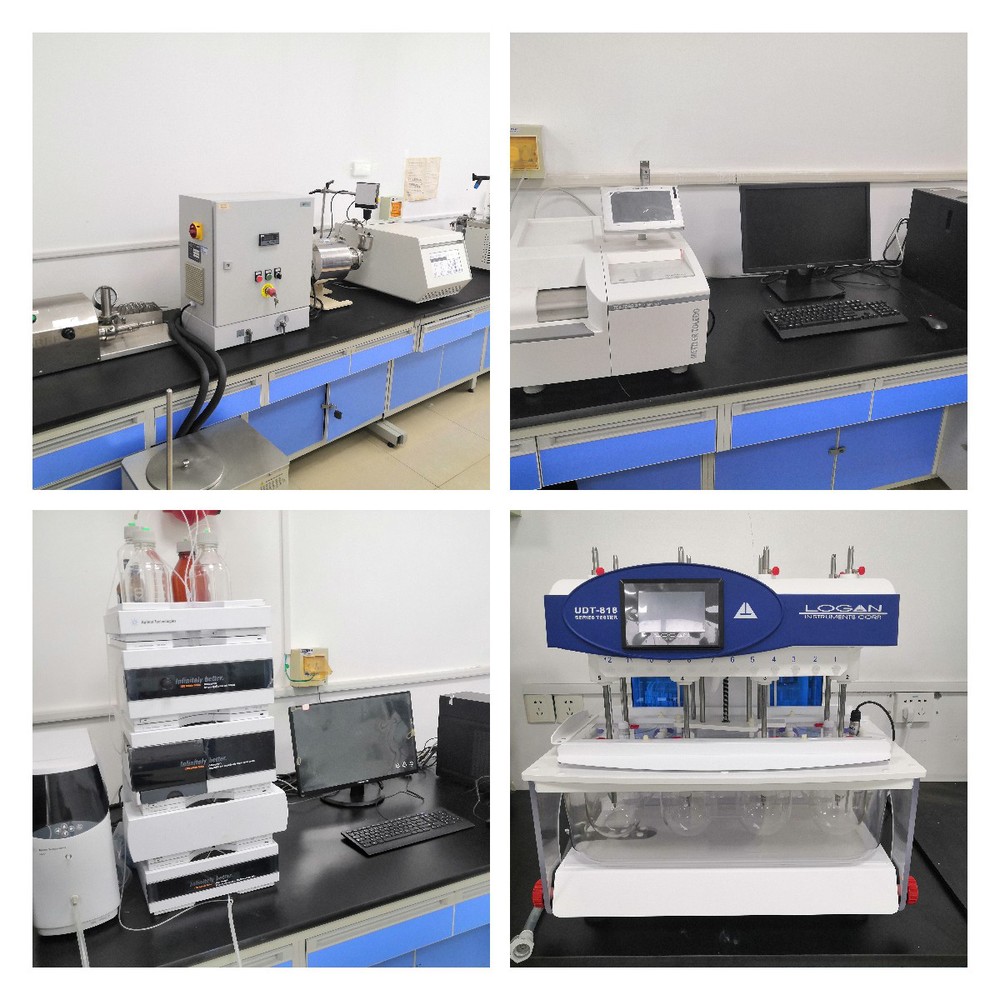I. Profile
The “Natural Medicine Preparation Engineering and Technology Laboratory was approved by the Shandong Provincial Department of Health as the Shandong Provincial Key Laboratory of Medicine and Health in 2013. At present, the main research fields and research directions of the laboratory include: (1) Discovery of natural active drugs and research on the pharmacodynamic material basis of traditional Chinese medicine (including traditional Chinese medicine compound): using China’s abundant natural medicines as resources to carry out basic and multidisciplinary innovative research, build innovative drug research theories and method systems based on natural drugs, carry out multi-directional integration of natural product extraction, separation, synthesis, and transformation, explore the drug features of natural active substances; apply modern technology and theories to traditional Chinese medicine, natural medicine and the chemical components of Chinese herbal medicines, combined with activity screening and evaluation, in order to clarify the effective material basis of Chinese medicines and Chinese herbal medicines, and promote the modernization of traditional Chinese medicines. (2) Targeted drug delivery system preparation engineering technology research: constructing inorganic nanomaterials and polymer nanomaterials, synthesizing targeted nano drug delivery systems with clear structures and stable properties, achieving the purpose of slow and controlled release through the characteristics of the system's effects on tumor cells in vivo and its influencing factors to improve the selectivity of chemotherapeutic drugs, and promoting their rational and effective application; using anti-tumor drugs with different properties as models to prepare polymer-drug complexes that can release free drug molecules by hydrolysis , constructing a dual-drug nano-delivery system with precise dose and ratio control, and studying its anti-tumor effect, in order to provide a scientific basis for the development of a new dual-drug nano-delivery system and its transition to clinical applications; carrying out research, based on natural biological materials, on nano-self-assembly methods and material technology, research on drug loading and release of nano-dispersed systems, and research on drug release and distribution after different administration routes. By changing parameters such as the molecular weight of biological materials and designing functional groups on the surface of nano-microspheres, the drug delivery behavior and mechanism of the nano-dispersed system are discussed, and a new and efficient nano-controlled release drug delivery system is established.
II. The Team
There are currently 6 professors, 4 associate professors, and 4 lecturers in the Laboratory, all of whom have a doctoral degree. The members of the Laboratory have many years of relevant experience in the extraction, separation, structure identification, activity research on the active ingredients of natural medicines, and the design of targeted drug nano-delivery systems. Laboratory director Han Jingtian, professor, PhD, master candidate advisor, graduated from the Department of Chemistry of Shandong University in 1983, received a PhD in Science from Shanghai Institute of Nuclear Research, Chinese Academy of Sciences in 2000, and assumed the position of Research Fellow at Otago University in New Zealand in 2000. He returned home in August 2010 and has been working as a full-time researcher ever since, mainly engaging in the research in the fields of controlled and sustained release, the construction of targeted nano-drug delivery systems and new dosage forms of anti-tumor drugs, and having presided over and participated in a number of scientific research projects at all levels. He has published more than 80 research papers in important domestic and foreign academic journals such as Biofouling, European Polymer Journal, Colloids and Surfaces A: Physicochem Eng Aspects, Colloid & Polymer Science, Colloids and Surfaces B: Biointerfaces and other academic journals Articles (including more than 60 articles being included in SCI). He is currently a member of the Chinese Chemical Society, a member of the Inorganic Chemistry Professional Committee of the Shandong Society of Chemistry and Chemical Engineering, reviewer of international academic journals such as European Polymer Journal, Colloid & Polymer Science, and Applied Surface Science.
III. Academic Achievements
Until 2020, the Laboratory has undertaken 9 National Natural Science Foundation projects, 17 Shandong Natural Science Foundation projects, 1 Shandong Provincial Key R&D Program, 1 Shandong Provincial Administration of Traditional Chinese Medicine Research Project, 2 Shandong Provincial Medical and Health Plans, 9 Provincial Science and Technology Plans for universities in Shandong, with a total funding of more than 3 million yuan. It has completed the research on the chemical constituents and pharmacological activities of various medicinal plants such as Lonicera japonica, Lonicera edulis, Lonicera edulis and edible and medicinal plants, as well as the design and evaluation of a variety of new drug delivery systems.
IV. Infrastructure
At present, the total area of the Laboratory is about 280 square meters, and the total value of instruments and equipment is worth more than 3.5 million yuan. The main equipment includes semi-preparative liquid chromatograph, high performance liquid chromatograph, atomic absorption spectrophotometer, infrared spectrometer, ultraviolet spectrophotometer, fluorescence spectrophotometer, transdermal diffuser, nano ball mill, laser scattering particle size analyzer, Micro jet homogenizer, differential scanning calorimeter, freeze dryer, spray dryer, extrusion spheronizer, fluidized bed, ultrasonic cell pulverizer, intelligent dissolution tester, drug stability test chamber and drug strong light test boxes, etc. It is now fully equipped to carry out relevant experiments such as the separation and evaluation of natural medicines, and the design and construction of pharmaceutical preparations, which provides a guarantee for the development of high-level scientific research.






